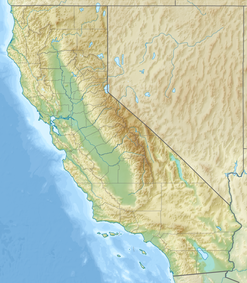Point Lobos
| Point Lobos State Natural Reserve | |
|---|---|

Looking north over Whaler's Cove, the largest of a number of coves in Point Lobos, and the location of Whaler's Cabin.
|
|
| Location | Monterey County, California, United States |
| Nearest city | Carmel-by-the-Sea |
| Coordinates | 36°31′1.56″N 121°56′33.36″W / 36.5171000°N 121.9426000°WCoordinates: 36°31′1.56″N 121°56′33.36″W / 36.5171000°N 121.9426000°W |
| Governing body | California Department of Parks and Recreation |
| Designated | 1967 |
Point Lobos is the common name for the area including Point Lobos State Natural Reserve and two adjoining marine protected areas: Point Lobos State Marine Reserve (SMR) and Point Lobos State Marine Conservation Area (SMCA). Point Lobos is just south of Carmel-by-the-Sea, California, United States, at the north end of the Big Sur coast of the Pacific Ocean.
Point Lobos contains a number of hiking trails, many next to the ocean, and a smaller number of beaches. It is the site of a historic marine reserve, which was expanded in 2007. It is also the home to a museum on whaling, which includes a historic building once used by area fishermen. The longstanding wildlife protection and scenic seascape have led to Point Lobos' reputation as an unparalleled local recreational scuba diving destination. The park's origins are owed to engineer Alexander Allan, who purchased a large parcel of land in 1933 to prevent it from being developed. It was to be subdivided into 1,000 lots under the name of "Carmelito".
The iconic Point Lobos area is geologically unique and contains a rich and diverse plant and animal life both on shore and in the water. Called the "greatest meeting of land and water in the world" by landscape artist Francis McComas, Point Lobos is considered a crown jewel in the California state park system. The geological history of Point Lobos describes the rocks that create the headlands and inlets that make Point Lobos famous.
Carmel submarine canyon lies just north of Point Lobos. Like Monterey Canyon to the north the canyon provides cold, nutrient-rich water to the surface during upwelling events. These nutrient rich waters fuel the high primary productivity seen in Carmel and Monterey Bays, which in turn support the high diversity of life observed in the water and on land at Point Lobos.
The original Point Lobos Ecological Reserve was created in 1973. As one of California's oldest and best known no-take reserves, its large and diverse fish populations make Point Lobos a hot spot for non-consumptive recreational diving.
...
Wikipedia


